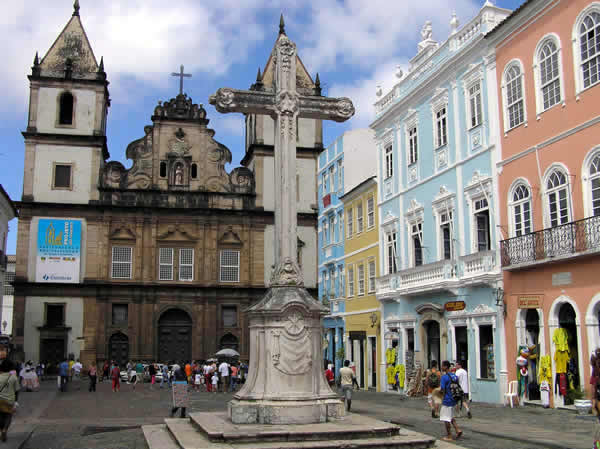This post is also available in:
![]() Deutsch
Deutsch ![]() Français
Français ![]() Italiano
Italiano ![]() Português
Português ![]() Español
Español
Salvador (Bahia) is one of the historical cities of Brazil. This city was founded in 1549 by the Portuguese and immediately became the capital of the colony of Brazil. For over two hundred years it remained the capital of the colony. Only in 1763 did it lose its status, in that year it was replaced by Rio de Janeiro. During its long history Salvador was also conquered by the Dutch. Between 1624 and 1625 Salvador was occupied by the Dutch of the WIC that is the Dutch Company of the West Indies.
A WONDERFUL HISTORICAL CITY
The city is historically one of the most beautiful in Brazil. This historic city is full of ancient monuments. There are entire historic districts such as that of Pelourinho, fortresses and wonderful churches. UNESCO has included it in the list of World Heritage Sites. In fact tourism is one of the driving forces of the city’s economy.
Salvador (Bahia) is today the third largest city in Brazil by population. It has over three million inhabitants, which become more than four million with the metropolitan area. The city is located along the Atlantic Ocean coast in a beautiful bay in the Northeast of Brazil. Salvador is made up of two separate areas. The lower city (Cidade Baixa) formed by the commercial part and the port, and the upper city (Cidade Alta), which is the ancient colonial nucleus where the characteristic Pelourinho district is also located.

Salvador is a beautiful historical city full of valuable colonial buildings dating back to the 16th, 17th and 18th centuries. There are churches, monasteries, palaces and fortresses that alone are worth a visit to the city. The beaches that dot the coast south and north of Salvador are also very beautiful. The city is the second most popular tourist destination in Brazil, after Rio de Janeiro.
A few hundred kilometers inland, the splendid Chapada Diamantina is certainly worth visiting. A region full of caves, waterfalls, lagoons and tabular mountains.
The climate of Salvador.
[divider]
[divider]
[divider]
This post is also available in:
![]() Deutsch
Deutsch ![]() Français
Français ![]() Italiano
Italiano ![]() Português
Português ![]() Español
Español



